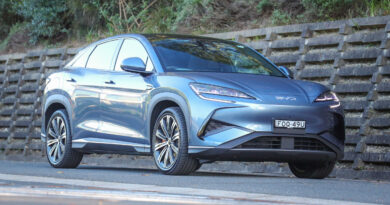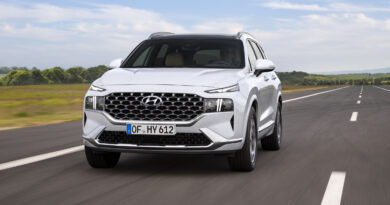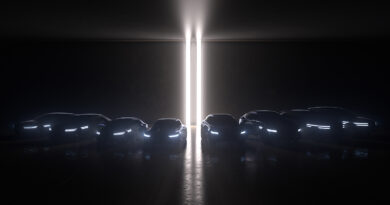Audi e-tron GT gets huge power boost to take on Tesla Model 3 Performance, Porsche Taycan
The 2024 Audi e-tron GT is now even more desirable, after the fast four-door GT went under the knife in Germany to ensure it can keep up with the competition that includes the closely related and recently updated Porsche Taycan.
Primed to arrive Down Under in either late 2024 or early 2025, the Audi e-tron GT gets a mildly refreshed exterior, an overhauled cabin, extra power and a bigger, more advanced battery, plus revised suspension settings.
With the base e-tron GT now renamed the S e-tron GT, the cheapest electric Audi four-door gets a big power boost, with the base model now pumping out an epic 500kW – up 125kW on the old model.
With more punch, the Audi S e-tron GT can now launch from 0-100km/h in just 3.4 seconds and top out at 245km/h.
It’s not just the entry model that gets more performance; the RS e-tron GT now musters an incredible 630kW (up 155kW), which is enough to see it storm from 0-100km/h in just 2.8 seconds.
Finally, at the top of the tree is the RS e-tron Performance, which delivers a monstrous 680kW and allows a 0-100km/h of just 2.5 seconds, making it the fastest and most powerful Audi ever sold for public roads. Both RS models do top out at 250km/h, some way off the Audi R8 supercar’s 330km/h top speed.
The Audi RS e-tron Performance is also just 0.1sec slower than the closely-related Porsche Taycan Turbo S that produces more power still (700kW.)
From now on, all e-tron GTs will come with the same 105kWh (97kWh useable) battery pack that the latest revised Porsche Taycan boasts, with the new set up lifting the combined WLTP range of the S e-tron GT by a massive 120km to a respectable 602km range.
(Keep in mind, however, that previous e-trons have made bold range predictions that have turned out to be somewhat lower once the cars arrive in Australia.)
As well as allowing the e-tron GT to travel far further, the revised Audi four-door can now be topped up at a rate of 320kW if you can find a DC fast charger powerful enough. That’s up from the old car’s 270kW and, if you maintain that speed, a 10-80 per cent charge is said to take just 18 minutes. The new, bigger battery also shaves 9kg off the kerb weight, a hint at its clever construction.
Helping reign in all that extra pace is an upgraded braking system, which, on the S e-tron GT, combines tungsten carbide coated rotors and on the flagship RS models introduces carbon-ceramic discs.
As part of the upgrades, engineers have also dialled up the regenerative braking, allowing drivers to claw back up to 400kW (versus the 290kW from before). Enhancing efficiency, there’s now a better battery pre-conditioning system.
In terms of handling, the e-tron GT’s adaptive twin-chamber air suspension carries over with new dampers that have twin valves. The combination is said to improve cornering without ruining ride comfort.
The same suspension can rise by 55-77mm in just seconds when the door is opened, aiding access, with the Audi adopting a development of Porsche’s Active ride.
The steering has been tweaked for a quicker turn in and lighter steering in its default setting.
Drivers of the RS e-tron Performance will now have the choice of a unique ‘performance’ mode on top of the efficiency, comfort and dynamic modes, to unleash maximum power.
Within the Audi Virtual Cockpit there is a new dedicated display for the battery, but most will be more impressed by the new steering wheel, the redesigned 18-way adjustable massage sport seats and the availability of a Boost mode that adds a further 70kW for up to 10 seconds for even faster overtakes.
Elsewhere, there’s a set of fresh alloy wheels, while for the first time the S e-tron GT and the RS e-tron GT have different front bumpers, with larger air intakes and L-shaped trim on the RS models. The fastest Audi four-door also gets a body-coloured grille, while at the rear the RS gets a different diffuser.
Other neat additions include an electrically controllable glass roof that switches from transparent to opaque at the touch of a button.
The Performance version switches out the trick glass for a lightweight carbon-fibre roof panel and carbon exterior trim on the bumpers, door trims and mirrors.
Following the facelift, owners are offered the option of either a set of 20- or 21-inch alloy wheels.
Full Australian pricing is expected to coincide with the Audi S e-tron GT and RS e-tron GT’s arrival, which is timed for around the end of 2024 or early 2025.
When it arrives, expect a healthy price premium over the current e-tron GT line-up, which ranges from $182,400 to $251,100 (plus on-road costs).




